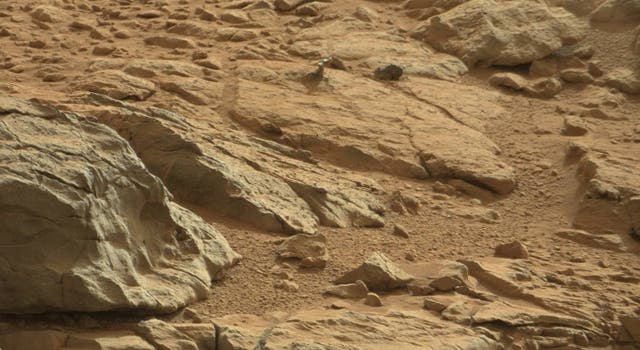A piece of Mars is going home — NASA engineers want to use a chunk of Martian meteorite to calibrate a future science mission.

An unlikely lift
In 2002, a rather odd-looking rock was found in the Uhaymir region of Oman. Weighing no more than 206 grams (0.45 pounds), it drew the attention of geologists and astronomers. Based on its chemical and isotopic composition, they dated the impact at around 9,700 years ago and traced its origin back to Mars. Now, the meteorite named Sayh al Uhaymir 008 (SaU008) will be going back home, hitching a ride on NASA’s Mars 2020 rover mission.
Mars 2020 is an ambitious mission: not only does it plan to collect samples from the Red Planet’s surface and save them for a future retrieval mission, but it also wants to carry out chemical analyses on rock features as fine as a human hair.
However, working with such fine details is no easy task, and it requires a lot of fine-tuning and calibration. This isn’t necessarily a new thing, as previous NASA missions have used calibration before — but if you’re calibrating things, why not use the real thing as a scale?
“We’re studying things on such a fine scale that slight misalignments, caused by changes in temperature or even the rover settling into sand, can require us to correct our aim,” said Luther Beegle of JPL. Beegle is principal investigator for a laser instrument called SHERLOC (Scanning Habitable Environments with Raman and Luminescence for Organics and Chemicals). “By studying how the instrument sees a fixed target, we can understand how it will see a piece of the Martian surface.”

The plan is to study the meteorite on Earth, measure it thoroughly and write down its physical parameters. Then, when the new rover will settle down on Mars, it will re-scan the meteorite and see if it gets the same results. If something went wrong along the way, then at least researchers will be able to compensate the error. You can perform this sort of calibration with any viable sample, but having one that’s similar to your intended target (in this case, Martian rocks) can add that extra bit of precision — but there’s a catch.
Martian meteorites are quite rare, with only 200 being confirmed by The Meteoritical Society, which has a database of these meteorites. So they’re quite precious and difficult to come about. To make things even more difficult, not any meteorite would do — it needs to be one which features certain chemical features to test SHERLOC’s sensitivity. These features need to be reasonably easy to detect, in order to easily ensure repeatability. The sample also needs to be sturdy, as flaky pieces can break off and damage or destroy the equipment.
Ultimately, they found the right sample at the Natural History Museum of London, where it was made available by courtesy of Caroline Smith, principal curator of meteorites at the museum.
“Every year, we provide hundreds of meteorite specimens to scientists all over the world for study,” Smith said. “This is a first for us: sending one of our samples back home for the benefit of science.”
Aside from the meteorite, Mars 2020 will also carry materials that could be used to make spacesuit fabric, gloves, and a helmet’s visor. Seeing how they hold up in the rugged Martian environment will be key for the planning of manned missions to the Red Planet.
“The SHERLOC instrument is a valuable opportunity to prepare for human spaceflight as well as to perform fundamental scientific investigations of the Martian surface,” said Marc Fries, a SHERLOC co-investigator and curator of extraterrestrial materials at Johnson Space Center. “It gives us a convenient way to test material that will keep future astronauts safe when they get to Mars.”






